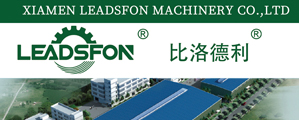Newsroom
Dec 24, 2015 | by

Chinese Textile enterprises go to Australia to take another route
The 15th China Clothing and Textiles Expo hosted by China Chamber of Commerce for Import and Export of Textile and Apparel (CCCT) and Department of Commerce of Jiangsu Province and Department of Commerce of Shandong Province will be exhibited at Melbourne Exhibition & Convention Centre from November 16 to 18. The Chinese textile and apparel enterprises are improving their competitiveness constantly relying on the personalized clothing customization service and mechanized and efficient production process in the Australian market.
There is an increasingly competition of textile enterprises between China and Southeast Asia countries due to the rising labor cost in recent years. The exhibitors have intensified the efforts on product research and development and launched clothing customization service for enhancing market competition. Moreover, some enterprises have innovated production mode, replacing manual operation process with advanced equipment to promote production efficiency and make up the cost disadvantage. At present, the Australian market has showed the business opportunities under the push of Sino-Australian Free Trade Zone. The exhibition is the best channel for the enterprises longing for expanding the market but not having been able to get the hang of it, and for the exhibitors to know the characteristic of the market by testing whether the products are marketable. As the exhibitors said that besides meeting the new customers and gaining orders, they also expect to show the new products and corporate image in front of the customers, which is the premise to cooperate and build trust.

Japanese textile enterprise spins trees into noodles by cloth-making technology
Omikenshi is trying to get into the health-food business, using its cloth-making technology to turn trees into noodles. The Osaka-based company’s best-selling product is rayon, a fiber made from tree pulp. Using a similar process, Omikenshi is turning the indigestible cellulose into a pulp that is mixed with konjac, a yam-like plant grown in Japan. The resulting fiber-rich flour, which the company calls “cell-eat”, contains no gluten and fat and almost no carbohydrates. It has just 60 calories a kilogram, compared with 3,680 for wheat.
“Demand for diet food is strong and looks promising”, while the Japanese textile market is saturated and threatened by rising imports, said Mr. Takashi Asami, manager at Omikenshi’s strategic material development department.

The garment industry will usher the aged people field
There occurred a lot of dressing problems of the old as they grow older and the body gradually weakened. Richard B. Freeman, professor in department of economics, Harvard University came to Shanghai to attend the Second Round Table Forum and proposed the aging of the population will not slow down the speed of scientific and innovative construction, on the contrary, it will lead to the growth of the new requirements, triggering “demographic dividend” in consumption field and the clothing industry will have a big share. The insiders said that the old people demand more on the basis of functionalities and designs to develop new types of fabric and clothing with quality of physiological characteristics detection, health management, life assistance, trajectory tracking and entertainment and fashion.

India will prolong the anti-dumping duties on Chinese Narrow weave for a year
On 28 Oct, 2015, Central Board of Excise and Customs announced that the Ministry of Commerce and Industry of India will impose anti-dumping duties and PVC investigation on narrow weave produced in China’s mainland and Taiwan ON 1 Oct, 2015, resulting in prolonging the time of the anti-dumping duties for a year to the deadline of 5 Oct, 2016. The HS Code of the involved product is 5806.10.
In Jun, 2004 India initiated an investigation on narrow weave produced in China’s mainland and Taiwan and the final result was released in Jun, 2005.

Japan imports 90% of Japanese garments from Asia states
Japan depends heavily on clothing import from Asia states and arrives at 90% according to the statistics. In the first half year of 2015, the temporary data counted by Ministry of Finance of Japan indicates that the total number of imported clothing is about 1.73 trillion yen which has increased 6.2% compared to that of the same time of last year. And the clothing import from Asia countries accounts for 92.8%, about 1.6 trillion yen.
According to the data, Japan has imported 1.16 trillion yen of the Chinese clothing from April to September in 2015 and increased 1.1% compared to that of the same time of last year. In addition, the United Kingdom and the United States also occupied a large proportion in the Japanese garment importing market. Japan has imported 89.65 billion yen clothes from the United Kingdom from April to September 2015 and saw an increase of 5.8% compared to the same time of last year. Moreover, Japan has imported 97.12 billion yen clothes from the United States and saw an increase of 2.8% compared to the same time of last year.








